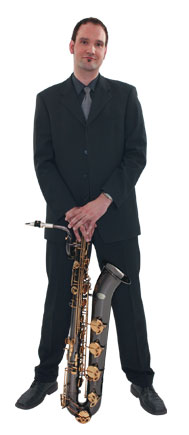Introduction: viewing and listening angle during rehearsals
In this workshop I won’t be showing you specific exercises designed to improve your playing technique. Instead, I want to discuss problems that are likely to surface when a brass section, bigband or a brass ensemble starts rehearsing new repertoire. This workshop encourages musicians to change their viewing (or should I say: listening) angle for the preparation of new repertoire. Even though I will be referring to a "bigband", the basics of what I am trying to say also apply to traditional and symphonic brass sections.
The ideal bigband
Here is what an ideal bigband looks like: all registers are manned/womanned by accomplished musicians with complete mastery over their instrument. A typical rehearsal starts with the distribution of the score for a new piece, and all musicians are required to sight-read it. All indications"”articulation, phrasing, dynamics, etc."”are implemented flawlessly... the new piece sounds perfect. OK, next one please...
Real life
Bigbands"”or should we say: orchestras with meaningful wind and brass sections"”that come close to the ideal situation described above are known to exist. And the musicians in question are so good that they can make a living in music (provided they get paid, that is). Yet, there are far more bigbands composed of amateur musicians. Don’t get me wrong: many amateur musicians are actually rather good. And even if that were not the case, one might assume that the repertoire is chosen in such a way that all players stand a chance of being able to play the parts they’re asked to play. During the preparation of new repertoire, certain musicians manage to play their parts almost instantly, while others need more time. Naturally, all parts related to the "lead voice" (the melody line), are easier to master than parts that may, at first, appear rather abstract and a poor match. For popular tunes, this effect is even stronger.
"Well obviously..."
...is probably what some of you will retort: "Playing a melody you have already heard at least once is much easier." Maybe that is indeed so, but just think of the poor chaps who need to play parts that sound nowhere near the melody. One answer to this problem may be: "Obviously, one needs to think of the melody while practicing one’s own part, because the tune is what it’s all about." Right again, but that is precisely the point I want to make: only when hearing what "the others" play does it become meaningful to adapt the articulation, phrasing, timing and intonation of one’s own part. And despite the truisms I just mentioned, it should be clear by now that "listening" is key to playing music.
Rhythm and melody
Just listen closely to a bigband or a bigger brassband, and you will realize that the overall sound is the result of a rather complex compound of sometimes widely different musical elements. Understanding what we are hearing becomes easier if there is some kind of system that allows us to classify the various "sounds".
One easy system could start out with the identification of rhythmic elements:
- tempo (slow/fast)
- rhythm (time signature)
- phrasing type (binary/triplets)
- articulation
The same applies to the melodic elements:
- melody (lead part)
- parts running in parallel with the melody (harmonic extensions of the melody)
- contrapuntal parts (running against the melody)
- complementary elements, i.e. so-called backings (complementary rhythmic elements or solo parts, e.g. vocal)
This approach allows musicians to identify structures likely to help them make sense of the part they play within the overall structure.
The world’s smallest bigband
"Play with the Killerhorns" refers to the practical dimension of the present workshop. For the application of the systematic approach mentioned earlier within the framework of a workshop, I suggest we work with the smallest bigband in the world: a rhythm section, a singer and three horns. For group sessions, I have prepared bigband arrangements of pieces performed by the current Supercharge lineup. In addition, and no doubt equally importantly, there are recordings of the pieces we will prepare without the bigband. This should allow all members to come to grips with the style of the pieces without drowning in their own scores.
From brass sections to bigbands
Granted, a three-part brass section like the Killerhorns is not a genuine bigband. Yet, a three-part brass section allows me to illustrate the essential structure of any bigband arrangement. Voicings, harmonic structures, articulation and phrasing can be presented in a readily intelligible way and later applied to the various instruments, sections, and eventually the entire bigband.
See the "Mind the swing!" workshop for more exercises
In the meantime, have fun!
Big Jay.


